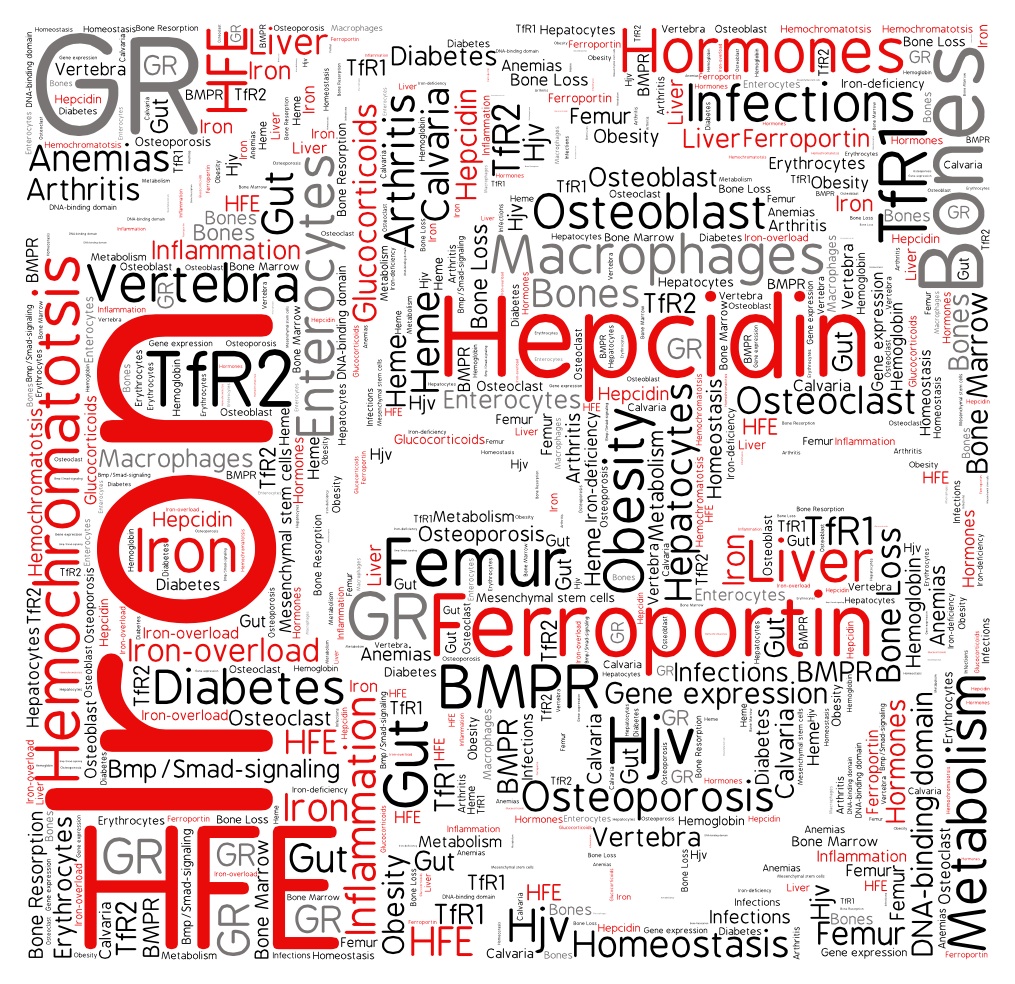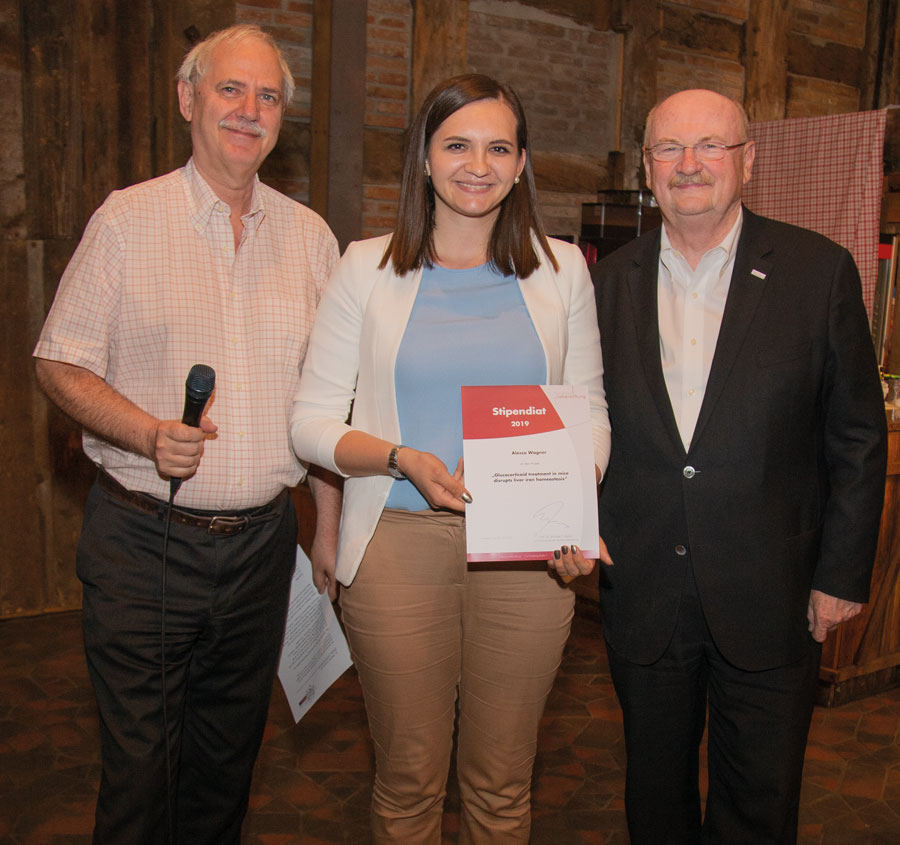Prof. Dr. Maja Vujic Spasic

89081 Ulm

Iron is the most common element on our planet. Yet over four billion people worldwide suffer from iron deficiency, half of them display iron-deficiency anemia. On the other hand, iron overload disorders constitute an increasing public health problem.
Hereditary hemochromatosis (HH) owing to the mutation in an old Celtic gene, Hfe (an atypical MHC class I molecule), is the most prevalent genetic iron overload disorder in the Western countries. HH begins as mere iron overload which over time will cause serious multiple organ dysfunctions, such as liver cirrhosis, hepatocellular carcinoma, atherosclerosis, arthritis, cardyomyopathies and other endocrinopathies. The environmental, genetics or epigenetic factors may contribute to variability of disease and the severity of iron overload.
Genetic data in mice and patients demonstrated that a relative deficiency of iron-hormone hepcidin underlies Hfe-HH disorders. Hepcidin is a liver-derived peptide that oversees systemic iron changes by determining iron absorption and iron release from the cells through binding to its receptor, the iron-export protein ferroportin. Thus low levels of hepcidin, present in Hfe-HH, signal for increased iron uptake from the diet via enterocytes, iron release from macrophages into the circulation and deposition of the excess of iron in parenchymal cells causing multiple organ damage and failure.
Our recent studies classified Hfe-hemochromatosis as a liver disease since the lack of Hfe in hepatocytes associated with impaired production of the liver iron hormone hepcidin, as observed in constitutive Hfe deficiency.
Whereas the phlebotomy is the most common treatment for HH and may reverse liver complications, for most of other organs removal of excess iron has little effect. These clinical observations led us to question whether Hfe-HH is an exclusive consequence of inadequate hepcidin expression from the hepatocytes, or whether some HH-associated pathologies may be due to distinct extra-hepatocytic functions of Hfe.
Our mission is to elucidate the role of Hfe beyond its established function in the liver and decipher the molecular association between extra-hepatocytic Hfe functions with the pathologies frequently occurring in Hfe-HH. Through the cgeneration of novel conditional Hfe knock-out lines (for example in hematopoietic tissues) and respective cells, we will examine how impaired extra-hepatic Hfe functions cause cell/tissue/organ-specific iron imbalances and possibly identify novel, so far unrecognised, features of Hfe beyond the regulation of iron metabolism.
Hanover, 2 July 2019 - The "Deutsche Leberstiftung" networking grants support scientific exchange between researchers and hepatological research institutions. This year, the experts decided to sponsor three projects with very different research approaches.
Doctors and scientists from all over Germany have applied for the networking scholarships of the Deutsche Leberstiftung with their projects. The assessment of the funding applications was carried out by an independent expert committee. Its members are Prof. Dr. Sandra Ciesek from Essen / Frankfurt, Prof. Dr. Mathias Heikenwälder from Heidelberg and Prof. Dr. Robert Thimme from Freiburg.
"This year's applications for the networking scholarships had a very high quality and great potential. Applications were submitted for the continuation of established, successful cooperations as well as for the initiation of new, future-oriented collaborations ", says Professor Dr. Sandra Ciesek from the reviewer committee.
After a critical examination and detailed discussion of the individual project proposals, the review committee unanimously decided to sponsor three scholarship holders.
In 2019, the following researchers will receive a scholarship from the Deutsche Leberstiftung to promote research networking:
Dr. rer. nat. Tanvi Khera from the University Hospital Essen with the project "Role of innate immune cells in acute hepatitis C cohort after DAA clearance" for a research stay at Karolinska Institutet, Center for Infectious Medicine, Stockholm, Sweden.
Priv. Doz. Dr. Nadja Lehwald-Tywuschik from the University Hospital Düsseldorf with the project "Wnt / β-catenin signaling regulate lipid metabolism in the steatotic liver" for a research stay at Stanford University, Department of Surgery, Stanford, CA, USA.
Alessa Wagner from the University of Ulm with the project "Glucocorticoid treatment in mice disrupts liver iron homeostasis" for a research stay at the Ludwig-Maximilians-University Munich, Gen-Zentrum.
"The projects, which are now funded with a networking scholarship, are very different in their approach and all absolutely worthy of support. The project of Dr. Khera addresses a highly topical issue that is also highly relevant to patients with acute hepatitis C. Mrs. Priv. Doz. Dr. Lehwald-Tywuschik will do basic research in the field of surgery for a very common disease in her project. And Mrs. Wagner is planning a clinically oriented project on an exciting topic that is becoming increasingly important", explains Professor Dr. Sandra Ciesek the decision of the reviewers for the three selected projects.
This year's networking scholarship recepients of the Deutsche Leberstiftung received their certificates at the evening event of the 16th HepNet Symposium on June 28, 2019 by Prof. Dr. Michael P. Manns, Chairman of the Foundation Board and Prof. Dr. Claus Niederau, member of the board.
Source: "Deutsche Leberstiftung" (shortened).
The complete press release of the "Deutsche Leberstiftung" can be found here (in German): https://www.deutsche-leberstiftung.de/presse/meldungen/vernetzungs-stipendiaten-2019/

Vujic Spasic, M. (2014) Molecular basis of HFE-hemochromatosis. Front Pharmacol 2014 Mar 11;5:42. doi: 10.3389/fphar.2014.00042. eCollection 2014.
Vujic Spasic, M. (2012) et al. Smad6 and Smad7 are coregulated with hepcidin in hemochromatosis mouse models. BBA Molecular Basis of Disease 1832(1):76-84 (*corresponding author)
Castoldi M., Vujic Spasic M. (2011) et al. The liver-specific microRNA-122 controls systemic iron homeostasis. J. Clin. Invest. 121(4):1386-96.
Vujic Spasic M., Kiss J., Herrmann T., Galy B., Martinache S., Stolte J., Gröne H-J., Stremmel W., Hentze MW., Muckenthaler MU. (2008) Hfe acts in hepatocytes to prevent hemochromatosis. Cell Metabolism (7): 173-178.
Vujic Spasic M., Kiss J., Herrmann T., Kessler R., Stolte J., Galy B., Rathkolb B., Wolf E., Stremmel W., Hentze MW., Muckenthaler MU. (2007) Physiologic systemic iron metabolism in mice deficient for duodenal Hfe. Blood 109(10): 4511-7.
more publications from Prof. PD Maja Vujić Spasić, PhD can be found in our list of publications.

